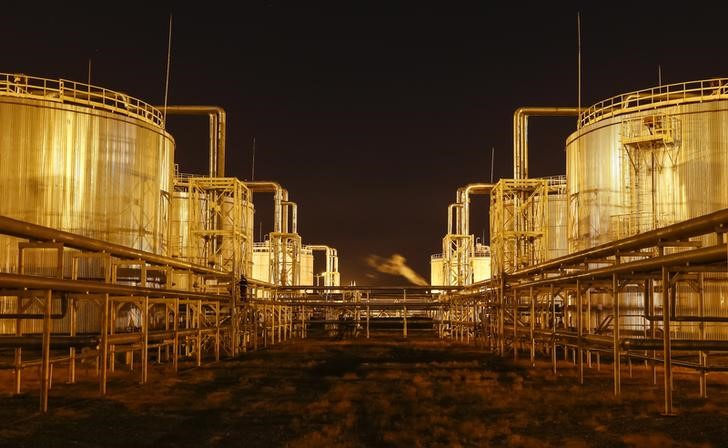By Peter Nurse
Investing.com -- Oil prices were off the high levels seen over the weekend in early afternoon trading in Europe, but were still trading positively after unrest hit production in two oil exporting countries, Iraq and Libya.
Security guards shut down production at the 70,000 barrel a day Al Ahdab field in Iraq at the weekend in a protest demanding permanent employment contracts.
At the same time two large crude production bases in Libya began shutting down after forces loyal to Russian-backed Khalifa Haftar closed a pipeline, in an effort to keep up the pressure on UN-recognized Prime Minister Fayez al Sarrajamid as attempts to end the civil war continue.
“Prior to the blockade, Libya was producing around 1.2MMbbls/d. A prolonged disruption from Libya would be enough to swing the global oil market from surplus to deficit in 1Q20,” said analysts Warren Patterson and Wenyu Yao at ING, in a research note.
OIl prices climbed to the highest levels seen in a week over the weekend, but have since given up some of these gains. By 6:45 AM ET (1345 GMT), U.S. crude futures were at $58.95 a barrel, up 0.7%, having peaked at $59.73 over the weekend, the highest since Jan. 10. Brent was up 0.8% at $65.36, from a high of $66, the highest since Jan. 9.
Analysts at Platts Analytics noted in a podcast earlier Monday that there was now very little risk premium in the market, and fundamentals warrant Brent to trade around the $65 a barrel level. It would take a substantial supply hit, such as a sustained disruption to production in Saudi Arabia or southern Iraq, or perhaps the closure of a shipping lane, for a risk premium to enter the market for any length of time.
After all, "the oil market remains well supplied with ample stocks and a healthy spare capacity cushion," said Stephen Brennock of oil broker PVM, in a Reuters report.
